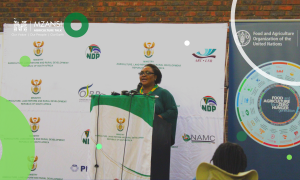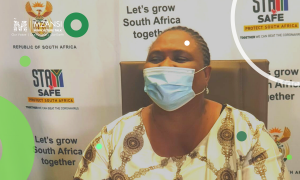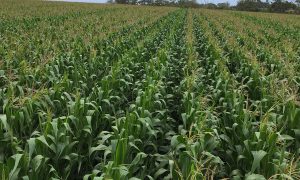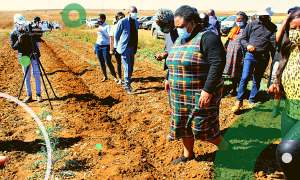Livestock farmers are an integral part of South African Sustainable Developmental Goals (SDG’s)

Livestock farmers have an essential role to play in the economic growth, health and sustainability of South Africa. Understanding their the depth and importance of their roles is essential in boosting the sector and encouraging farming in rising generations in South Africa, for our country’s food security and overall community health.
In September 2000, 191 United Nations (UN) member states, including South Africa, agreed to achieve 8 Millennium Development Goals (MDG) by 2015. These eight (8) goals became the central scaffold of the development effort of developing economies, like South Africa. These goals committed world leaders to combat poverty, hunger, disease, illiteracy, environmental degradation and discrimination against women. The target to achieve these goals was 2015.
As 2015 drew to a close, it was clear to the UN member countries, that while much was accomplished, with more than a billion people lifted out of poverty, many of these MDG’s were not complete successes and some failed completely. So, while assessing the outcomes of the MDG’s in 2015, the United Nations understood that there were complex challenges – from containing the spread of diseases to preventing conflict, that cannot be solved in isolation from other issues like hunger, nutrition, cultural believes, movement of people in areas of conflict etc. With this stronger insight and understanding of the inadequacies of the MDG’s, the UN then adopted17 Sustainable Developmental Goals (SDG’s) – also known as Global Goals – by all member states in 2015. This was a a universal call to action to end poverty, protect the planet and ensure that all people enjoy peace and prosperity by 2030.
In order to achieve these goals, countries are required to design integrated solutions that are unique to countries or regions, that build solutions that respond to people’s daily realities. These SDG’s require the interaction of governments, private sector, civil society and citizens alike, to all make sure that our collective interactions result in healthy societies and a better planet for future generations.
Even though the number of people suffering from hunger globally, has decreased since the 1990’s, the number of people with insufficient access to food has risen. And this is not just access to food, but food with significant nutritional value that contributes to a healthy balanced diet. Most developing countries (or emerging economies) are nett importers of food. With the increase in the price of food, especially those of animal origin, it is estimated that 1 billion people go to bed hungry and another estimate of over 2 billion are undernourished. The increasing food prices are believed to have pushed an estimated 100 million people into poverty. This had made it even more challenging to achieve the global goal of alleviating hunger and poverty.
In 2005, research from the UN showed that children who had access to animal sources of protein from the time of conception up till 2 years of age, are more likely to finish high school and enter tertiary institutions and then enter the skilled labour force, contributing taxes to their country’s economy and breaking the cycle of poverty in their families. The first animal source of protein a newborn child has access to, is breast milk – which is why it is recommended that breast feeding continues until 2 years old.
The amount and quality of that breastmilk is largely due to the dietary intake of the mother throughout her pregnancy. Brain and spinal cord foundation development happens in the first 2 weeks of conception. It is essential that the mother has adequate source of essential fatty acids (omega 3 fatty acids) for this neural development. After birth, a baby’s growth critically depends on the quality of the Childs nutrition. Breast milk offers the best mix of nutrients and omega-3-fatty acids for promoting brain growth and their iron requirements are mostly dependent on the mothers iron status during her pregnancy and post partum. Due to the rapid myelination of neural tissue in in the child’s early life, they need high levels of omega-3-fatty acids, contained in breast milk. Peer reviewed research by various development organisations have shown that children who were malnourished as foetuses and infants, have inadequate brain and spinal cord development, and may often suffer long lasting behavioural and cognitive deficits, including slower language and fine motor development, lower IQ and poorer school performance. These cognitive disabilities may trap them in the poverty cycle for generations to come.
The stark reality in South Arica is that very few mothers can’t afford to breastfeed their child up till 2 years old, as they only have 3 months of paid leave, if they are working or they may not be able to provide an adequate amount of milk for their child due to their own health and nutrition status. Those mothers that choose milk replacers will pay high prices for formula, due to expensive animal whey protein contained in milk formulas. Other mothers, who can’t afford milk replacer formulas, opt for milk creamers which are plant based, and do not satisfy the protein demand of a young growing child. Most children in pre-schools have access to feeding programs, but most of these preschool feeding programs are maize or bread based. While they may fill tummies for short periods of time, these programs are not really filling in the nutrient-rich requirements of a young growing child.
So, how do livestock farmers play a role in assisting developing economies in achieving the global directive of poverty alleviation by 2030?
Livestock farming is not just about the business of keeping animals and selling them. Amongst the varied roles of producing a constant supply of safe sources of animal proteins, like meat, poultry, milk, eggs, cheese etc., they are also responsible for the nutritional content of their products and sustainable farming practices that reduce the impact of their sector on the environment.
Today, livestock farming is well positioned to contribute to social transformation within resource-poor communities globally. Supporting livestock farming development in South Africa is primarily intended to generate income and meet the growing demand for animal sources of protein for South Africas growing population. We need to understand and describe the complexities of the livelihood strategies used by resource-poor communities, the role of livestock, and its linkages to human nutrition and health status. Livestock kept by poor communities can produce a regular supply of nutrient-rich animal sources of protein, that provide a critical supplement and diversity to a staple maize or plant based diet. This is especially true for milk and eggs, which can help mitigate the effects of seasonal availability of grain or infrequent slaughtering of animals for meat – which may only occur for ceremonies or funerals or ,when animal becomes sick or unproductive.
Many subsistence farmers focus on the amount of animals they have, but there is also a trend at providing a better quality of meet that improves human nutritional status. Adequate and appropriate livestock nutrition, good farm management practices, preventing livestock diseases, high standards of animal welfare, humane transport of livestock to slaughter facilities, amongst many others, all contribute to the quality of meat that ends up on dinner tables all over South Africa.
The responsibility of the livestock farmer is to provide the best quality animal to a slaughter facility and is therefore mainly responsible for that quality of meat by every management decision he/she takes from the time that animal is born on your farm, up until it is slaughtered. The slaughter-house then has a a dual responsibility of animal welfare and, a public health responsibility to ensure that animals are processed quickly and efficiently, under the supervision of meat and environmental health inspectors. Distributors and supermarkets are responsible for maintaining the cold chain and processing, and the end-consumer is responsible for the meat from the time they choose that pack off a supermarket shelf, up until that piece of meat is stored, prepared and eaten. We need to understand, that there is very little the the consumer can do to improve the nutritional content of the piece of meat that they are eating. They can, however, destroy nutritional content by not preparing the animal protein appropriately, to maintain a good nutritious level.
So, the farmer has an extensive role to play in human nutrition by the quality and safety of the products that are supplied to the South African consumer. The quality and accessibility of animal sources of protein, along with adapting diverse food choices and preparation of food, in pregnant females and young growing children, can set a better neural foundation for South African children.
Children in rural South Africa already face a multitude of challenges to finish their basic education. Let us help remove the nutritional barrier, and provide accessible and quality sources of animal protein, to our next generation. No child should go hungry.



















